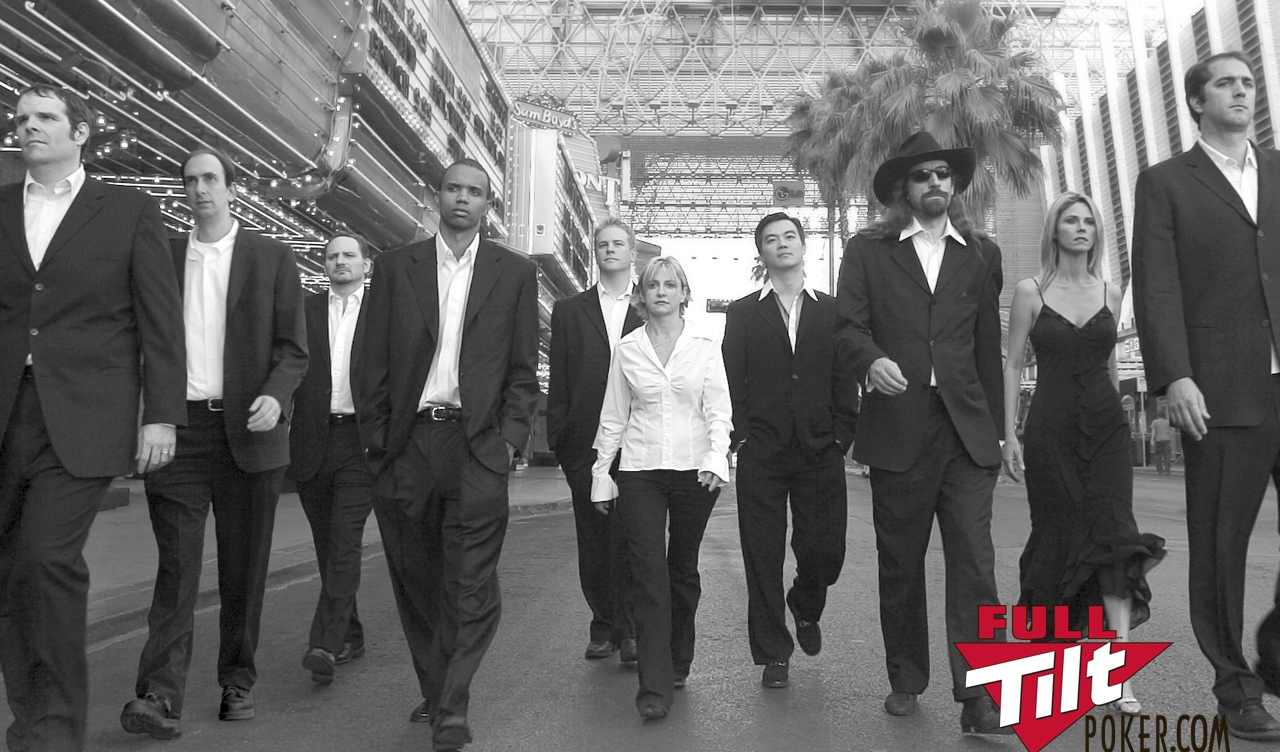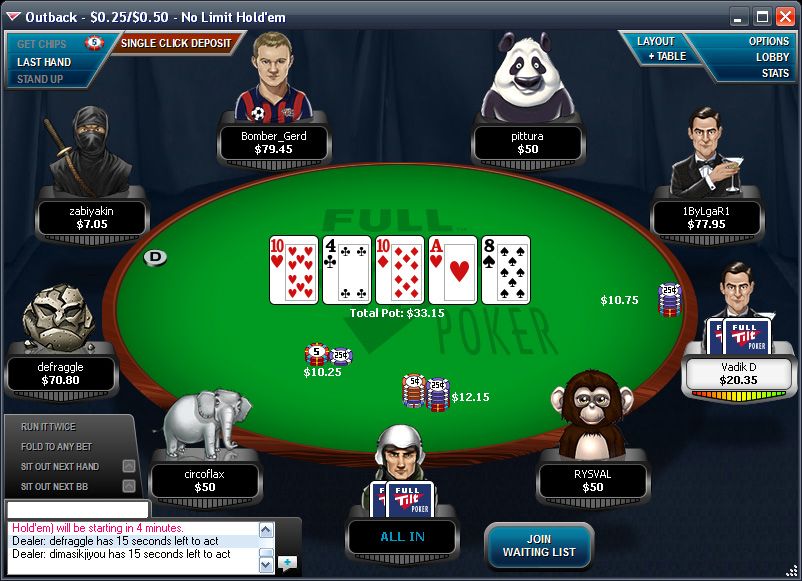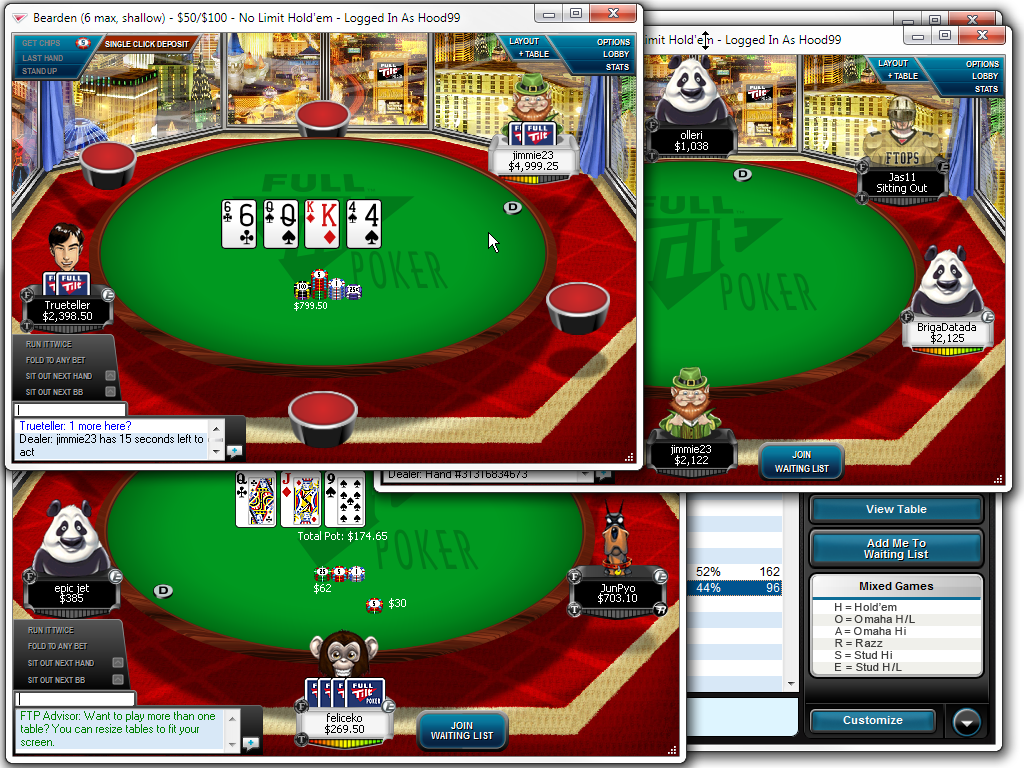Online Poker Full Tilt Poker
Online Poker Download Featuring exclusive promotions and tournament types you won't find anywhere else, we are the home of authentic poker players worldwide. Joining the tens of thousands of players.
While my friend and colleague Dan Katz reported earlier this week on the closure of Full Tilt Poker (occurring today), it was big enough that I felt that I needed to add onto the remembrances of the site. While many may dwell on what was the end – and the nearly nomadic existence it has had over the past decade – there was a time when the phrase “Full Tilt Poker” was one of joy. Let us take a walk down memory lane, shall we?
- Full Tilt Poker began in 2004 and the online poker site was co-founded by Ray Bitar, Jesus Ferguson, and Howard Lederer. It was shut down on Black Friday in 2011 by the feds and acquired by PokerStars.
- Full Tilt Poker offers a variety of Omaha Hi games, which are similar to Hold'em with respect to betting and blinds but differ in the number of hole cards players are dealt. We offer three variants of Omaha Hi poker: Omaha, 5-Card Omaha and Courchevel.
Do You Remember the U. S. Poker Team?
Way back in 2004, many in the U. S. were preparing for the Summer Olympics in Athens, Greece, and I was but a young(er) poker journalist. Now what do the Summer Olympics and poker have in common? One of the very first promotions for Full Tilt Poker was that they were advocating for poker to be included in the Olympics, and they took a masterful tack to build their audience.


In sending out an email to announce their “initiative” to have poker honored as an official sport at the 2004 Olympics, a company called Full Tilt Poker offered “U. S. Poker Team” hats and shirts to people who simply went to a website and gave up their email address. This masterful stroke allowed Full Tilt Poker to build an audience of poker players in general and, with the explosion of online poker, a ready database of potential players. When they launched in the summer of 2004, success was a foregone conclusion.
Many might have found the website cartoonish with its avatars, but it was just as good a poker site as the two dominant forces in the market at the time, PartyPoker and PokerStars. There was a tremendous number of games and variants offered and it offered tournaments aplenty. It was the second leg of their plan that was another masterful stroke.
As it turned out, some of the biggest names in the game had ownership in the site. Such popular pros as Howard Lederer, Chris Ferguson, Phil Ivey, Jennifer Harman and Phil Gordon (among others) made up “Team Full Tilt.” These top professionals were the stable for the site (part owners, as it came to be known) and they actively took on all comers on the virtual felt. This was unheard of! PROFESSIONAL poker players actually playing against those who wanted to be them…what a deal!
The first two years showed a slow but steady growth. They had an outstanding “relaxation area” for players during the 2005 World Series of Poker, adding to their legend. There was a memorable, ornate display in the “relaxation area” where the WSOP bracelets that members of “Team Full Tilt” had won over the years that was truly impressive. But the true growth would not come until 2006…
The “Golden Years” of Full Tilt Poker
In 2006, the Unlawful Internet Gambling Enforcement Act (UIGEA) was signed into law and Full Tilt Poker had a decision to make. Would they follow the course of publicly traded companies like 888Poker and PartyPoker and leave the U. S. market, or would they continue to service the country against the mandates of the UIGEA? Full Tilt, like the private company PokerStars, decided to stay in the country and reaped millions for the decision.
Over the course of the next five years, Full Tilt Poker went on to become the second largest online poker room behind only PokerStars. They continued to innovate in the online poker industry, bringing out more diverse poker variants that some poker rooms would not even touch (this allowed them to do mixed game tournaments). They also became the home of “high stakes” play, as Ivey and a plethora of young hotshots – including a then-unknown ‘Isildur1’ (Viktor Blom) – who would play at nosebleed levels (eight of the ten largest online poker pots in history took place at Full Tilt).
There would also be downsides for Full Tilt. Poker professional Clonie Gowen accused the ownership of wrongful termination, claiming that they offered her a 1% share in the company when she came on (Full Tilt denied this…then). They also had several lawsuits filed against them by others who had been a part of the Full Tilt family – at one point, they literally had over 100 “Friends of Full Tilt” that benefitted from the operations (and we count getting their rake back as a benefit).
The end would come quickly and suddenly, however…
“Black Friday” Destroys the Company
In April 2011, the U. S. Department of Justice dropped the hammer on the major online poker operations in the country – PokerStars, the CEREUS Network rooms Absolute Poker and UB.com, and Full Tilt Poker. While PokerStars was able to quickly negotiate a method to repay its U. S. players all monies they had on the site, the others – Full Tilt included – had not segmented their finances between being able to pay players and pay business expenses – in essence, they were using player money to fund operations, including paying their significant personnel. It may be arguable, but Full Tilt Poker was one of the worst abusers of this fact.
In court filings over the next six months, it became known that Full Tilt Poker paid the members of “Team Full Tilt” massive monthly payments from the operational funds. This included three members of its management: Lederer, Ferguson and Roy Bitar (Bitar was the only one of these three to face criminal charges). These payments left Full Tilt with no money on hand to pay players in the U. S. once the hammer was dropped by the DoJ.
Full Tilt Poker really died then, in September 2011, when they lost their operational license from the Isle of Man. Sure, PokerStars bought them in 2012 and relaunched the site, but it was but a shell of its former self. Full Tilt Poker limped along for a few more years before basically becoming a “skin” of PokerStars and not an independent operation in 2016. It has essentially existed in name only for the past five years.
Full Tilt Poker did a lot right in its time in the online poker industry. They had a “player first” feel to them that didn’t exist in another online site, as evidenced by their “Learn, Chat and Play with the Pros” tagline. But Full Tilt Poker was eventually ruined by those very pros that were responsible for its success. It is arguable that they would still be in existence today…IF they had been responsibly managed and fiscally responsible.
Requiescat in Pace, Full Tilt Poker…it was a good run.
It’s about time
For the last several years, Full Tilt Poker has been like Dr. Malcolm Crow in The Sixth Sense, an online poker room that didn’t know it was really dead. On Thursday, finally, the once-great poker site will stop wandering aimlessly, a ghost with no home, and accept that it passed away years ago. PokerStars has announced that Full Tilt will be no more.
As Full Tilt has been part of the PokerStars network since 2016, not much will change for the few people who still played on Full Tilt, aside from the cosmetic look of the site. Their accounts will be automatically transferred to PokerStars, including account balances and preferences. In fact, Full Tilt Poker players already had the ability to login to PokerStars using their Full Tilt credentials if they so desired. They will just be forced to do so started February 25 and that Full Tilt login info will officially be PokerStars login info.
Explaining why it is doing this, PokerStars explained in a FAQ on its website:
Our commitment to improving PokerStars software and the PokerStars customer experience in recent years has limited the amount of focus and resources we could apply to the evolution of Full Tilt. We feel it is time to consolidate brands so that everyone has access to the newest features and most innovative games which are available exclusively on PokerStars.
Full Tilt Net Poker
This was a long time coming, but it makes sense. In fact, it is surprising it didn’t happen earlier. The Full Tilt Poker name can’t have much value anymore and not only was it just a skin of PokerStars, it was operated by the company, so it’s not like an affiliate or other operator provided any benefit or marketing dollars.


Full Tilt used to be the belle of the ball
As readers of this site likely very well know, Full Tilt Poker, founded in 2004, was once one of the behemoths of the industry. It was unique when it launched, as it had fast software with bright, cartoony avatars, and was founded by well-known poker pros. It’s slogan, “Learn, Chat and Play with the Pros,” was quite true – the first time I played on the site, I played in a micro-stakes game with Perry Friedman, who was very nice to all of us noobs.
The site developed into the place to watch pros play and became famous for the nose bleed stakes cash games. When multitudes of poker rooms left the US market after the passage of the UIGEA in late 2006, Full Tilt jumped in stature even more, as it stayed in the market, along with PokerStars, UltimateBet, and Absolute Poker.
Full Tilt never got as large as its arch rival PokerStars, but it in its heyday, it was a very strong second.
A site that will live in infamy

But then Black Friday came along on April 15, 2011, when indictments were unsealed against principals from the aforementioned poker rooms, charging them with money laundering, fraud, and other violations related to the UIGEA. UltimateBet and Absolute Poker disappeared completely, making off with players’ money.
Full Tilt Poker Free Play
Full Tilt, though, was weird. When the feds froze the site’s accounts, it was discovered that Full Tilt did not have enough money to give players their deposits. There were two main problems. First, because Full Tilt was skirting the law, it was using a network of payment processors to avoid having its payments to customers detected. Millions upon millions of dollars ended up frozen/seized in between Full Tilt and the payment processors and the payment processors and customers. Second, and this is what really did in Full Tilt Poker and making it a shameful example of what can happen with no regulation, it was found out that executives, including Chris Ferguson and Howard Lederer, took millions in payments from the company, using player funds. Thus, when the money flow stopped, Full Tilt was underwater and couldn’t pay players back.
Online Poker Full Tilt Poker
Fortunately, PokerStars came to the rescue. In its whopping three-quarters of a billion dollar settlement with the US Department of Justice, PokerStars agreed to acquire Full Tilt’s assets and make its customers whole. The process took years, but most players did get paid back.
Full Tilt Poker online, free
PokerStars operated Full Tilt as a separate poker site at first, but players had little desire to return, so it made Full Tilt a PokerStars skin in the spring of 2016. Since then, most poker players didn’t even know Full Tilt still existed.